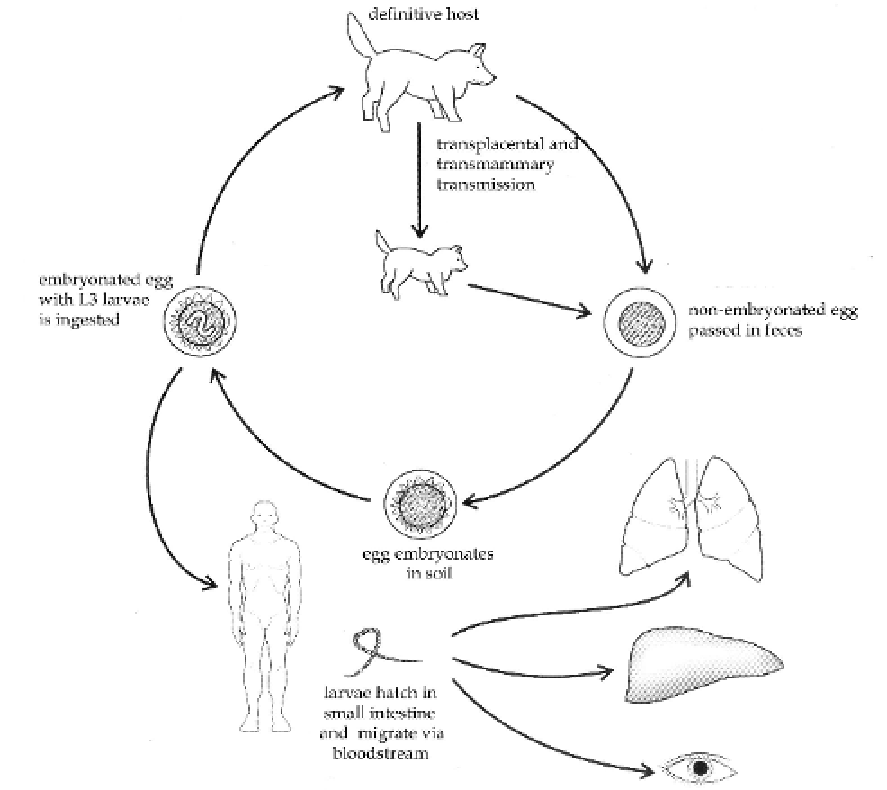Agriculture Reference
In-Depth Information
following ingestion of embryonated
T. cati
eggs in kittens than in older animals, but even
adult animals may be susceptible to infection and disease.
Fig. 1. Simplified life cycle of
Toxocara canis
.
T. cati
has a very similar life cycle, except that
cats (instead of dogs) are the definitive hosts. Adapted from Despommier (2003).
T. canis
larvae arrested in the tissues may be transmitted from bitches to offspring via the
placenta (transplacental transmission). However, this phenomenon is not observed in
T. cati
infections of cats. During the last trimester of pregnancy of the bitch, tissue-arrested larvae
become mobile due to hormonal influence. Larvae migrate to the lungs of the fetus. In the
newborn puppy, the life cycle is complete when the larva migrates, via trachea, to the
intestinal lumen, where the final molts take place. Adult worms can be found at two weeks
of age, whereas large numbers of eggs can be detected in the feces after a minimum pre-
patent period of 16 days (Barriga, 1988, 1991).
Embryonated eggs present in environment may be ingested by a variety of accidental,
paratenic hosts, such as rodents, sheep, pigs, cattle, birds, and humans. When such eggs
from the soil or contaminated food are accidentally ingested by humans, L3 larvae hatch
into small intestine, reach the lung and the heart and are carried to the systemic circulation.


